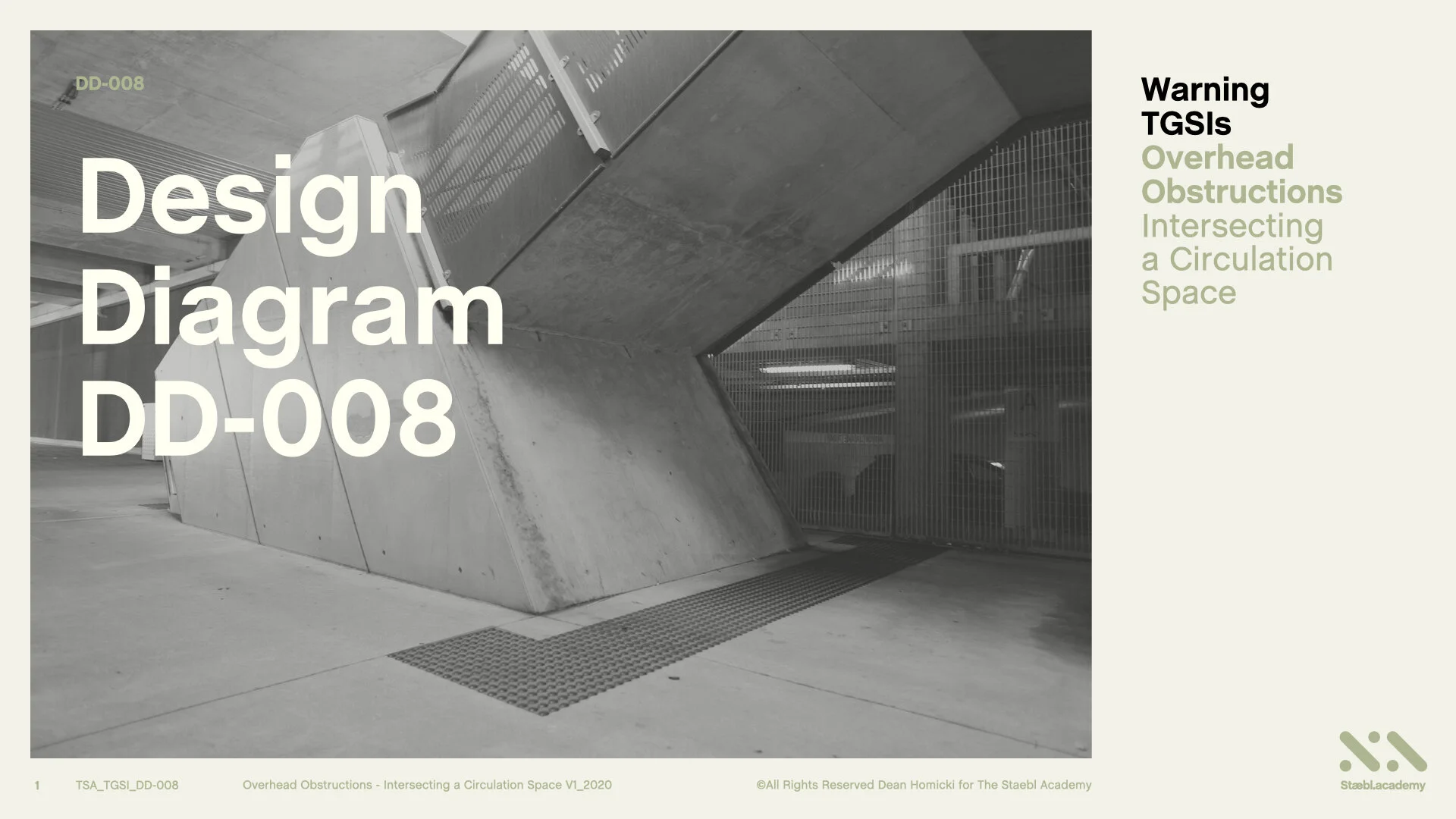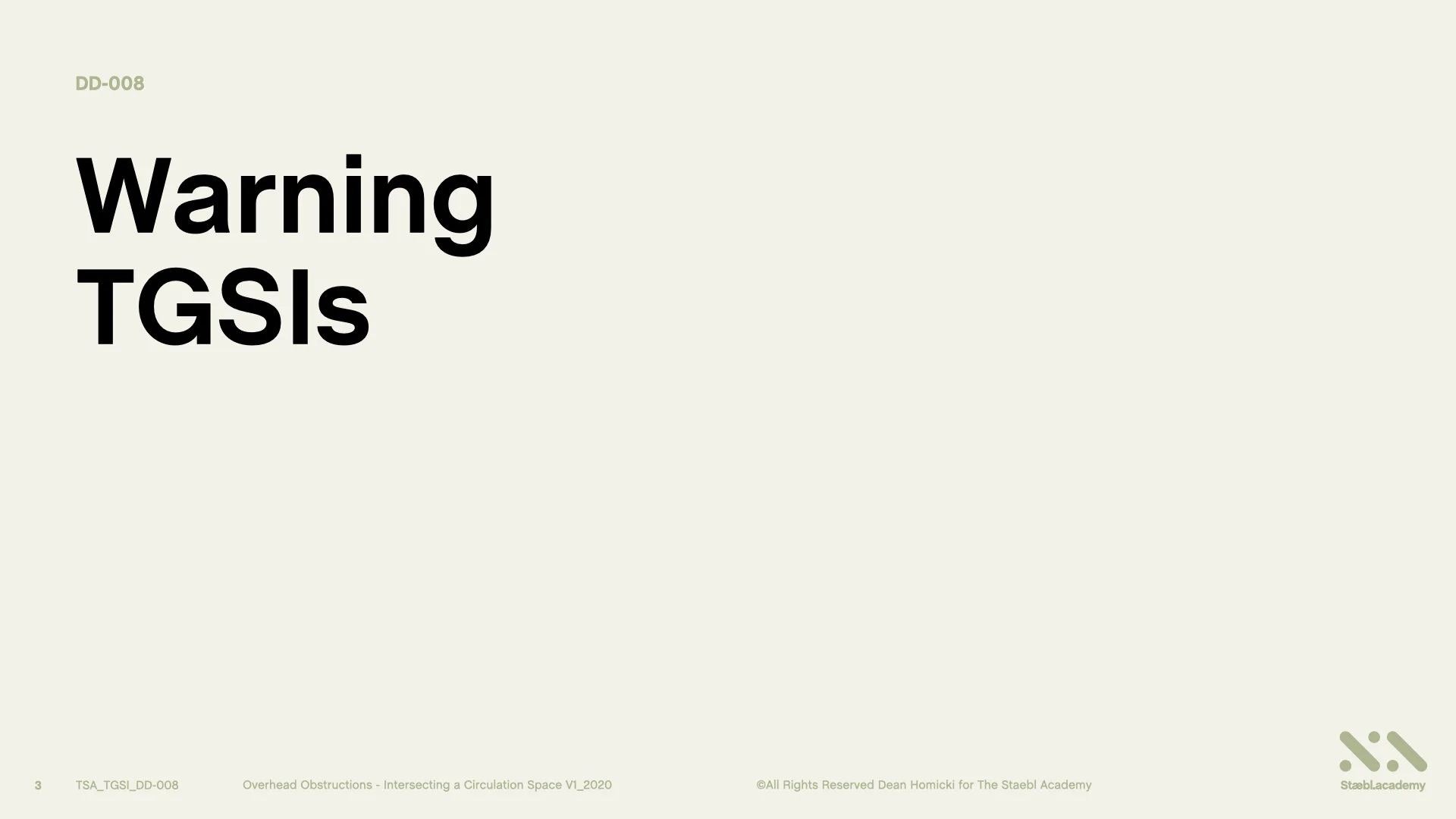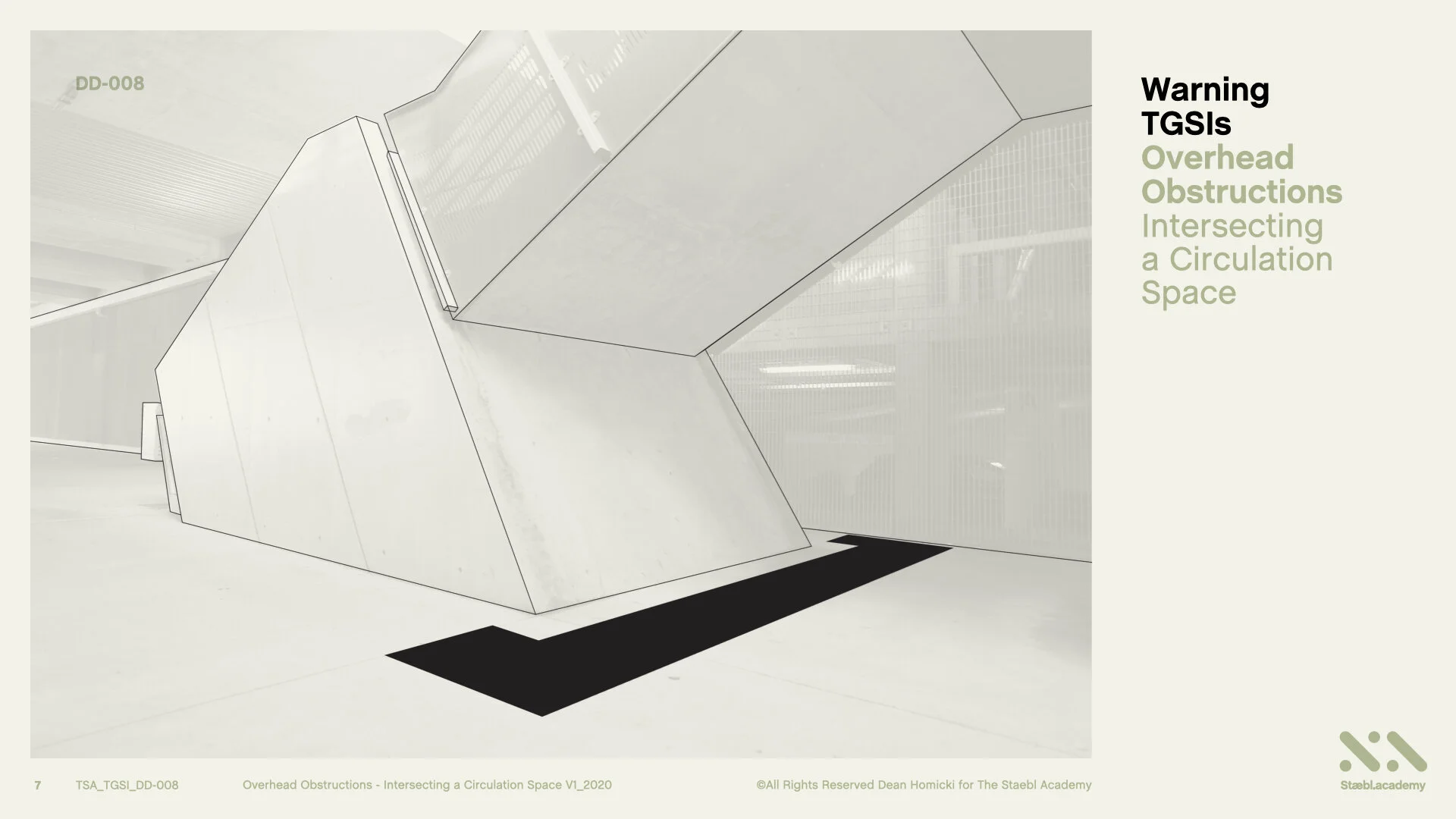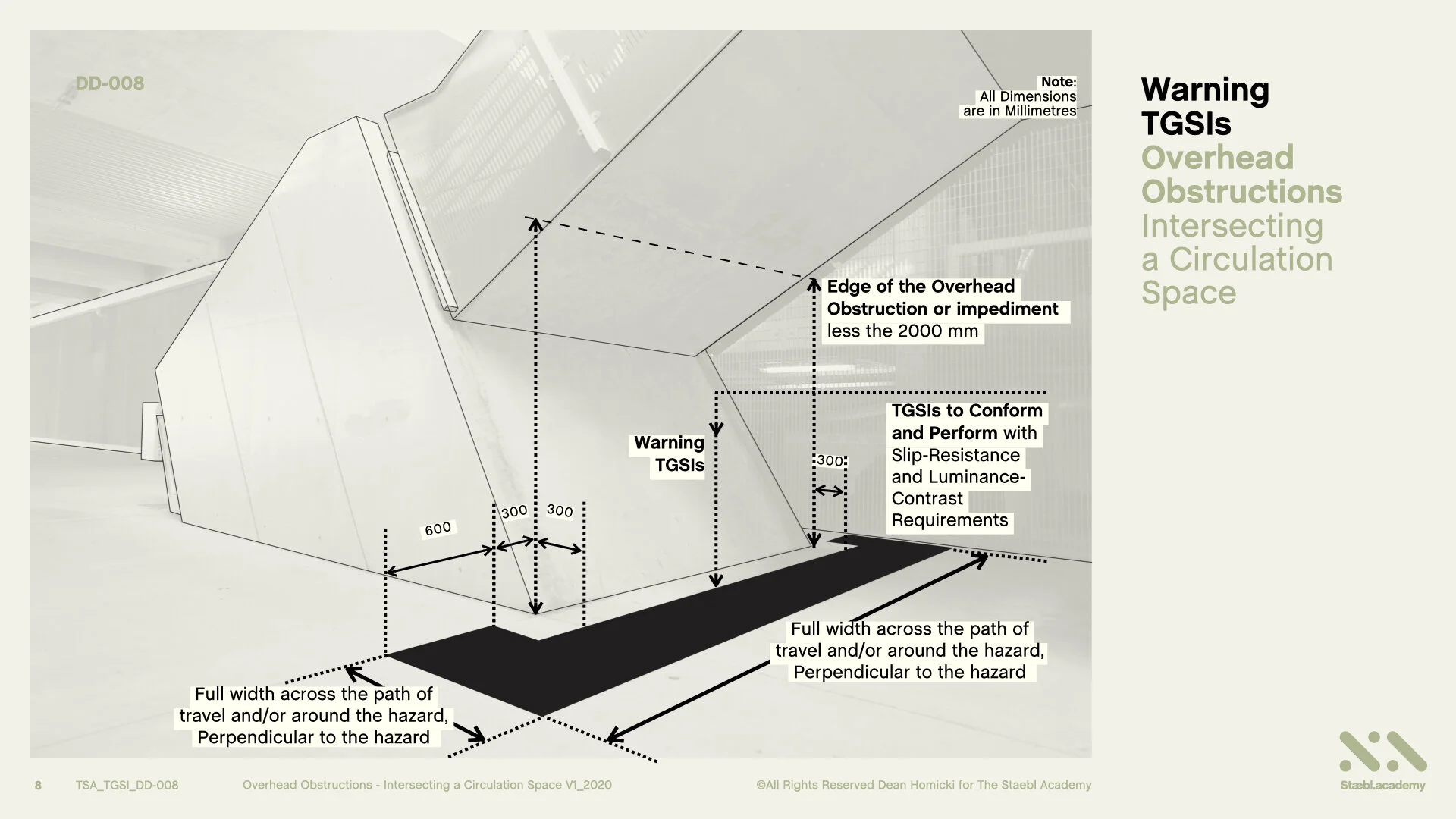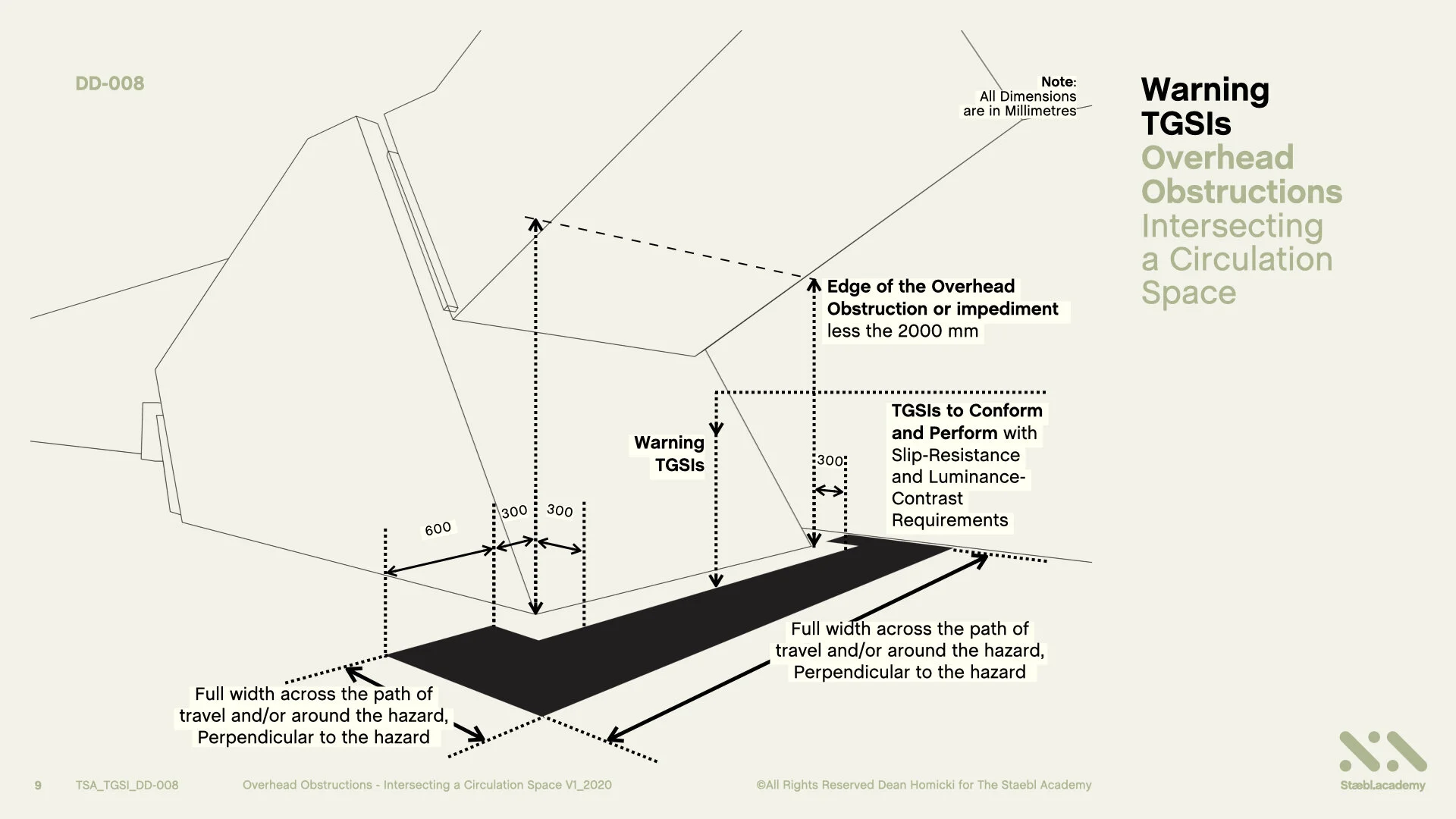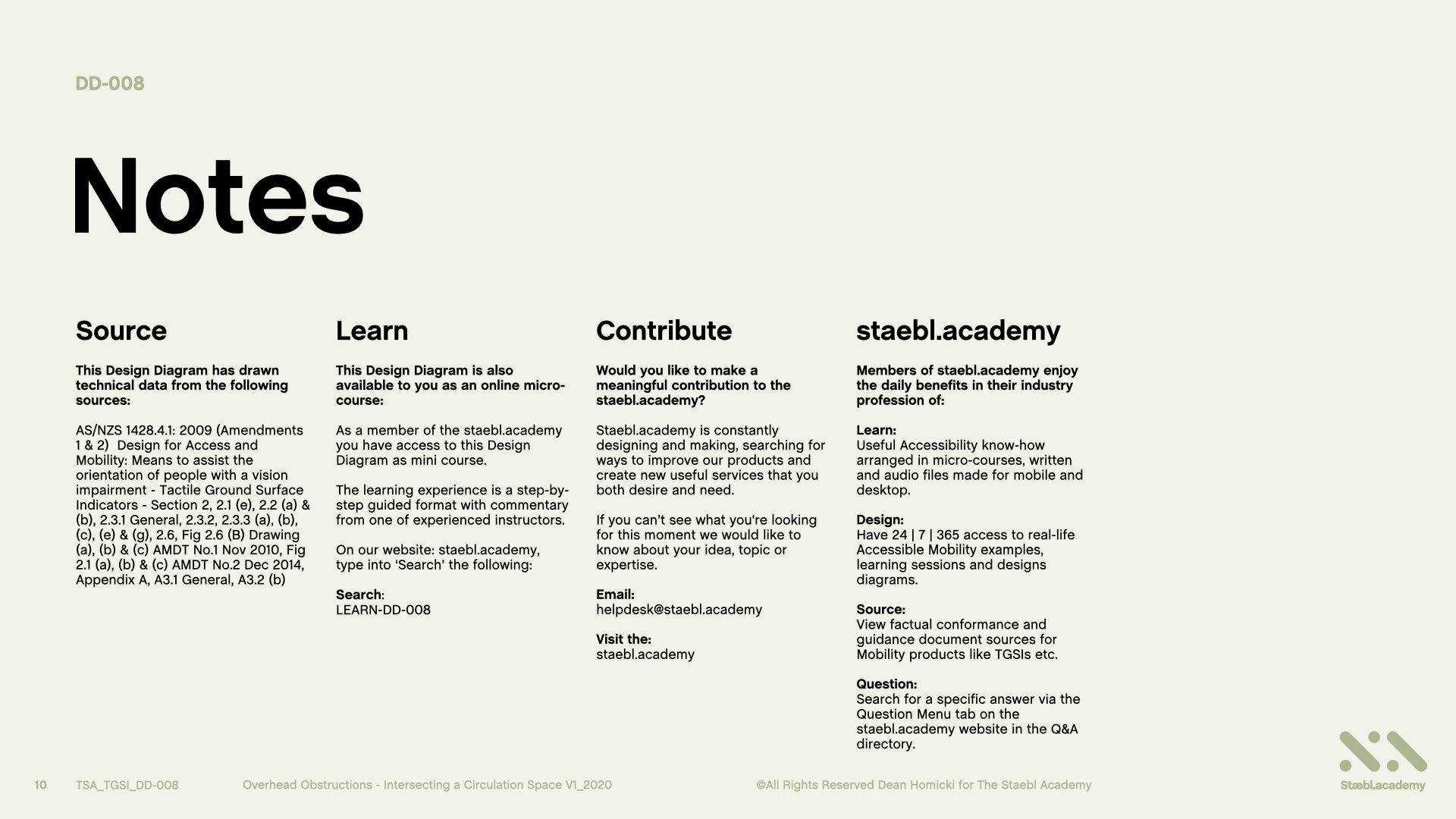Overhead Obstructions- Intersecting a Circulation Space
Course: DD-008 | Length: 4:55 mins | Instructor: Dean Homicki
Chapters
00:26 - Learning Overview
01:46 - Learning Session
02:12 - Let’s Begin
04:15 - Learning Resources
Transcript
This learning session will cover the use of Warning TGSIs and:
Overhead Obstructions that are intersecting with a Circulation Space.
Welcome to staebl.academy TGSI Design Diagram 008. I’m Dean Homicki and I’ll be your guide for this course.
Learning Overview
Let’s review one type of overhead obstruction, the underside of a staircase, and together extract what the Australian TGSI Standard requires of the situation.
Warning TGSIs Shall be set back 300 mm with a tolerance of +/- 10mm, from the point of the Overhead Obstruction or Impediment, that is 2000 mm or lower in clearance, that is intersecting with, or adjacent too, an accessible open public space.
TGSIs must be installed parallel to the obstruction or impediment, for the full width across the path of travel and/or around the hazard, to a minimum depth of 600mm.
TGSIs for this application shall also conform and perform, with the applicable Slip Resistance and Luminance Contrast Requirements.
Here is a real-life situation of an Overhead Obstruction, or impediment, showing the underside of a Staircase with Discrete Warning TGSIs installed around the hazard.
We are going to now convert this image it into a perspective line drawing and view how TGSIs have been used in this application.
Here’s the line drawing of the image.
Learning Session
In this example, people can enter the underside of this stairway as there are no physical barriers enclosing this area.
In the absence of a suitable barrier, for the orientation of persons who are blind or vision impaired, applying this knowledge enables us to determine how to use TGSIs as hazard indicators and conform to the specifications of the Australian TGSI standards.
Let’s Begin
Around the area to underside of this stairway, we view an impediment in this circulation space that is accessible at and from multiple angles to the hazard. The hazard is the underside of the staircase that pedestrians can walk into and cause harm or damage to their self.
This scenario also applies to the area adjacent to the side of the stairway too. The circulation space adjacent to the underside of the stairway - that is, an area that is accessible at and from multiple angles of approach to the hazard.
From the point or edge of the Overhead Obstruction that is 2000 mm or lower, and where there is NO Continuous Path of Travel, as result of the obstruction, we require Warning TGSIs to be set back, 300 mm +/- 10 mm from the Edge of the Overhead Obstruction, 2000mm or lower.
This Edge goes right across the overhead hazard. This is because someone could walk into the hazard from the side or at an angle to the overhead hazard, as displayed in this instance.
On the left and right-hand sides the Overhead Obstruction, from this point, we must set back of the hazard 300 mm +/- 10 mm, for a minimum depth of 600 mm. This equates to 12 TGSI nodes at 50 mm spacings. And, for the full width across the path of travel and/or around the hazard, perpendicular to the hazard.
And again on the side, or adjacent to, the hazard. Warning TGSIs must be for the full width across the path of travel and/or around the hazard, perpendicular to the hazard.
TGSIs for this application shall also conform and perform, with the applicable Slip Resistance and Luminance Contrast Requirements.
And here is a real-life TGSI application once again.
Learning Resources
That’s the conclusion for Warning TGSIs and Overhead Obstructions that are intersecting with a Circulation Space.
You can also access this course as a concise series of design diagrams in the resource section of our website staebl.academy/design. To access this resource now, click on the link below this video.
Thanks for joining me here at the staebl.academy. I look forward to guiding you through another learning session in the near future. Bye for now.
Listen
Click/Tap the audio player below to listen to the written transcript of this design session as an audible version. This is a streamed broadcast from the Staebl.academy site
Diagrams
Click/Tap on an image from this learning session to view it as a larger picture. You will then be able to scroll through each individual design diagram in this slide-deck for a closer inspection.
Sources
TSA-TGSI-LEARN-DD-008 - This staebl.academy course module has drawn information from the following sources:
AS/NZS 1428.4.1: 2009 (Amendments 1 & 2) Design for Access and Mobility: Means to assist the orientation of people with a vision impairment - Tactile Ground Surface Indicators - Section 2, 2.1 (e), 2.2 (a) & (b), 2.3.1 General, 2.3.2, 2.3.3 (a), (b), (c), (e) & (g), 2.6, Fig 2.6 (B) Drawing (a), (b) & (c) AMDT No.1 Nov 2010, Fig 2.1 (a), (b) & (c) AMDT No.2 Dec 2014, Appendix A, A3.1 General, A3.2 (b)



